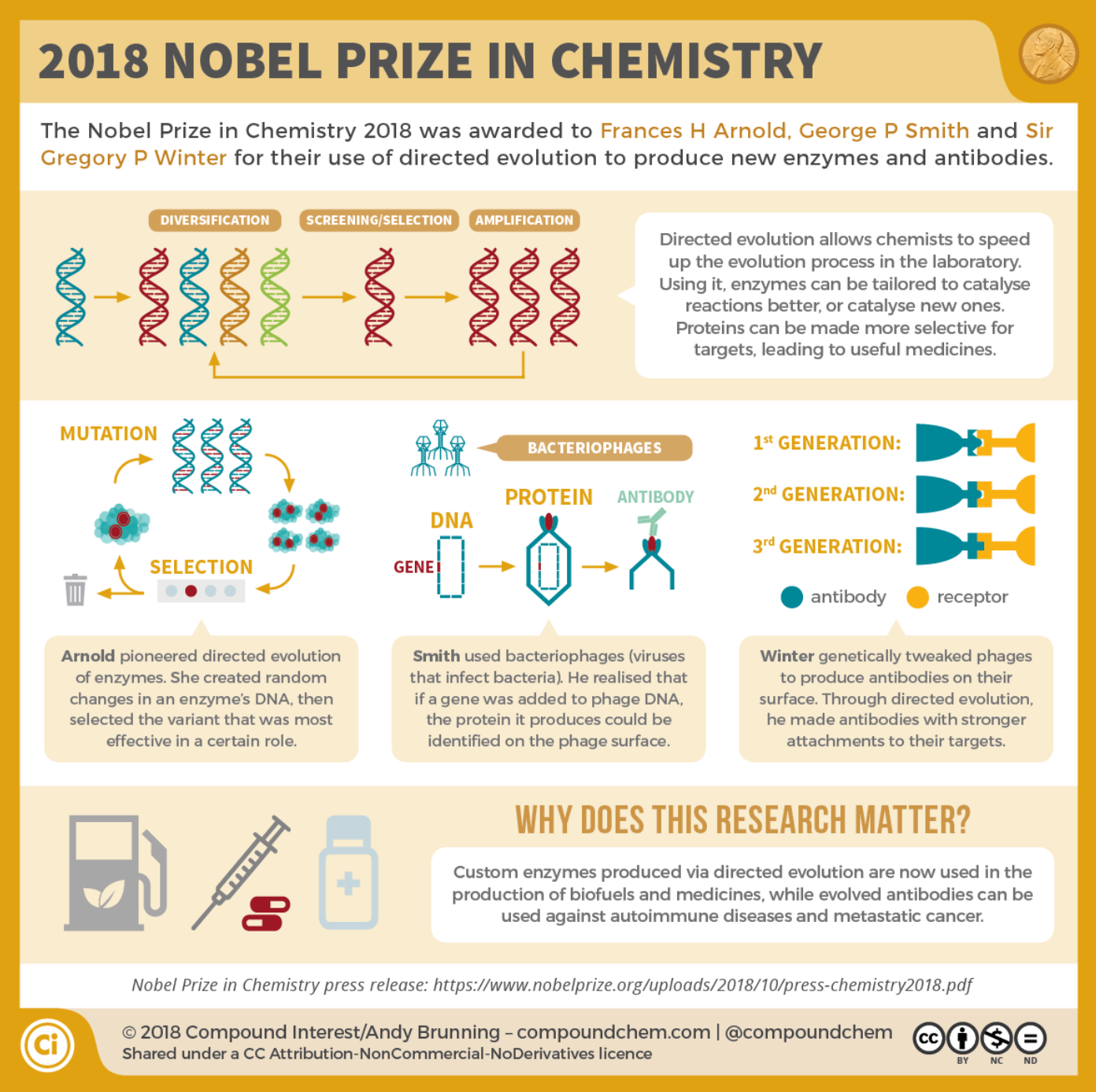What is Directed Evolution and Why Should I Care?
Directed Evolution describes the process by which we can harnesses the power of evolution, from which many of our existing technologies have obtained their inspiration, to design new technologies. The main premise of directed evolution is that unlike any other form of innovation, the exact mechanism of the invention does not need to be known to the inventor. Instead, all that is needed is the purpose of the invention, which is then used to design an environment that selects for organisms possessing a trait that would serve said purpose. Through a "mutagenic process", countless permutations of traits are generated, and the selective environment then selects and amplifies the traits that would serve the purpose. The process can be repeated for further refinement.
Already, Directed Evolution has been recognized as worthy of a Nobel prize, with Dr. Frances Arnold winning the prize in 2018 for her work on directed evolution. But beyond that, you should care about directed evolution precisely because it offers a completely new way to innovate that removes much of the time and resource consuming guesswork from the invention process.
To learn more, download and read the research report below, which offers a comprehensive summary about how directed evolution works and what it can (and has) be used for.
Current State of the Art in Directed Evolution
The current state of the art in directed evolution involves trying to increase the mutation rate, and thus the amount of diversity that can be selected from, without increasing the death rate of the organisms. This can be done by selectively inducing mutagenesis on a particular gene or sequence of genes while leaving the rest of the genes in the organism to mutate at the usual background rate. Work by Rongzhen Tian, Christian Diercks, and many others have succeeded in inducing selective mutagenesis to certain regions of DNA via a "error-prone polymerase" that only replicates (and mutates) the DNA in the designated area, while the organism continues to use its usual polymerase to replicate DNA in the rest of the genome.
What About AI?
Directed evolution isn't the only game in town for designing novel proteins with novel functions. The Nobel Prize in 2024 was given to scientists who helped develop AI that designs proteins, such as Google's AlphaFold or David Baker's AI models. However, we should view AI and directed evolution less as competing technologies and more as synergistic technologies. Work by scientists such as Daniel Hesselson shows how AI and directed evolution can complement one another, such as by directed evolution dynamically refining proteins initially created by AI.
Directed Evolution Use Cases
-
Directed evolution can be used in bioremediation through the evolution of organisms and proteins that can digest plastics, toxic chemicals, pollutants, and so on. There might also be implications in designing more easily scalable direct air capture (DAC) methods to assist in reversing climate change.
-
Directed evolution, both with positive and negative selection, can help design target-specific proteins and treatments like antibodies that have already assisted in the fight against pathogenic illnesses. There are also potential implications in cancer research, as well as in conservation and reducing pesticide use.
-
Directed evolution can help in designing new organisms that are primed to produce biofuels, as well as improve the efficiency of photosynthesis so the rate of biofuel production can increase. This can reduce global reliance on fossil fuels by providing a clean, renewable energy source that can be easily grown on any farm.
-
Directed evolution of metabolic pathways can allow for the evolution of not just new proteins, but new molecules and materials. This can have invaluable implications in synthesis, leading to a reduction in the costs of compounds. It can also massively boost progress in materials science by circumventing the complex and computationally expensive process of designing materials, so we can jump right to having a material that does something we need it to do.
-
As a speculative application, the evidence for quantum effects in biology might allow directed evolution to play a role in designing new ways of maintaining the coherence of quantum states even in noisy environments.
-
In the far future, directed evolution may help to design organisms that can protect space travelers, or potentially even construct spacecraft in space while minimizing costs and risk. It may also be useful for terraforming purposes, such as in a future where colonies are constructed on Mars.

